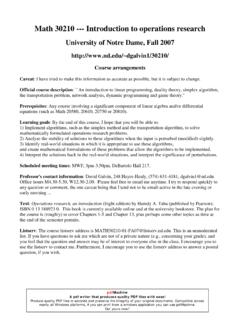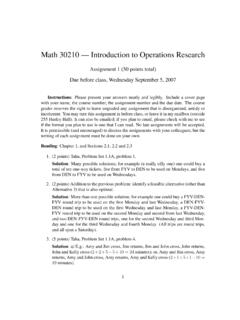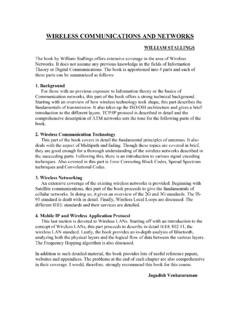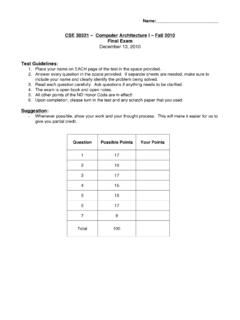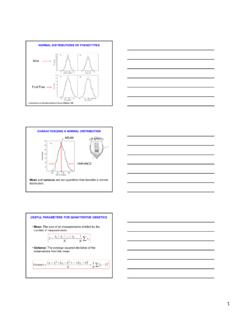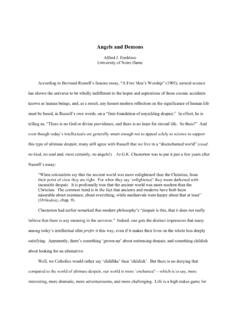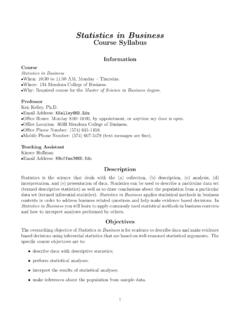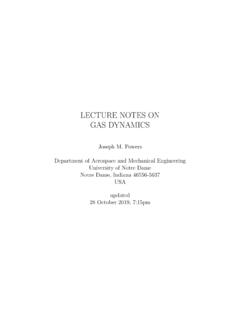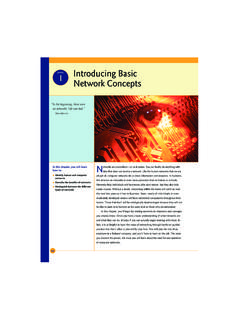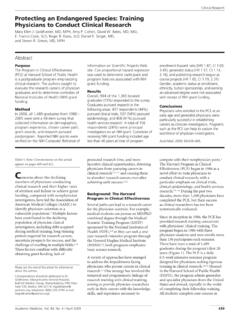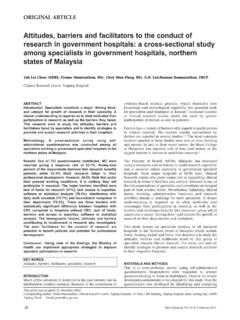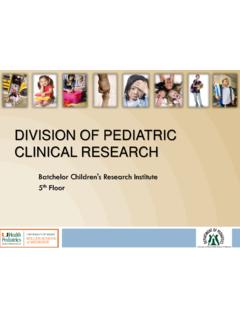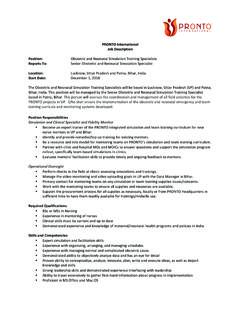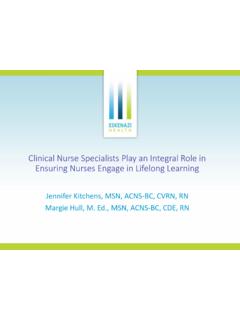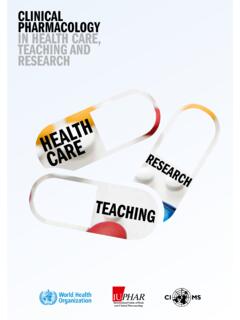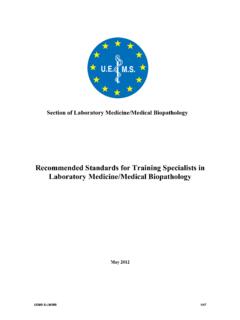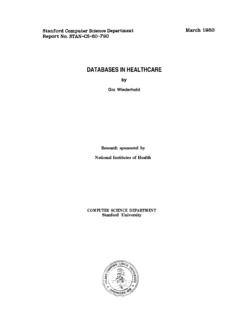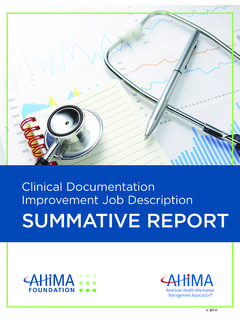Transcription of HOW TO WRITE AN EFFECTIVE RESEARCH PAPER
1 HOW TO WRITE AN EFFECTIVE HOW TO WRITE AN EFFECTIVE RESEARCH PAPERRESEARCH PAPER Getting ready with data First draft Structure of a scientific PAPER Selecting a journal Submission Revision and galley proofDisclaimer: The suggestions and remarks in this presentation are based on personal RESEARCH experience. RESEARCH practices and approaches vary. Exercise your own judgment regarding the suitability of the content. P. KamatGetting ready with dataGetting ready with dataGather all important data, analyses, plots and tablesOrganize results so that they follow a logical sequence (this may or may not be in the order of experiments conducted)Consolidate data plots and create figures for the manuscript(Limit the number of total figures (6-8 is usually a good number).)
2 Include additional data, multimedia in the Supporting Information.)Discuss the data with your advisor and note down important points?Important: KNOWthe focus of your paperIt takes a wise man to know whether he has found a ROPE or LOST A Anonymous quoteFirst draftFirst draftIdentify two or three important findingsemerging from the experiments. Make them the central theme of the good and bad writing styles in the literature. Some are simple and easy to follow, some are just too the readership of the journal that you are considering to publish your workPrepare figures, schemes and tables in a professional manner(Pay attention to quantification of data accuracy, significant digits, error bars,) one sig fig three sig figsStructure of a scientific paperStructure of a scientific paperTitle Abstract TOC Graphics Introduction Experimental Section (Some papers require this section to be at the end)
3 Results and DiscussionConclusionsAcknowledgmentsRefe rencesSupporting InformationAlso try to get it rightTitleCompose a title that is simple, attractive and accurately reflects the investigation -Phrases to avoid: Investigation, Study, Novel, Facile Avoid Acronyms that are known only to specialized communityWhich of these two titles make you read the PAPER ?Large Aggregated Ions Found in Some Protic Ionic Liquids Danielle F. Kennedy and Calum J. Drummond J. Phys. Chem. B, 2009, 113(17), pp 5690 5693 Large aggregated parent ions, for example, C8A7+(C = cation and A = anion), have been observed within some protic ionic liquids (PILs) using electrospray ionization mass spectrometry (ESI-MS).
4 We have shown that the formation and size of aggregates is dependent on the nature of the anion and cation. Solvent structuring in select PILs through aggregation can contribute to their classification as poor ionic liquids and can also strongly influence the entropic component to the free energy of amphiphile self-assembly in select it simple and informativeAbstractFirst couple of sentences should focus on what the study is about. Include major findings in a style that a general readership can read and understand ( , avoid detailed experimental procedures and data.)
5 Keep it short and EFFECTIVE . -Be creative in generating curiosityMake use of TOC Graphics to convey the themeTOC GraphicsA scheme or figure to convey the theme of PAPER GraphversusSchemeIntroduction Start the section with a general background of the topic. Add 2-3 paragraphs that discuss previous work. Point out issues that are being addressed in the present work. Experimental Section Divide this section into Materials & Methods, Characterization, Measurements and Data analysisResults and Discussion(These two sections can be combined or separate) Describe the results in detail and include a healthy, detailed discussion The order of figures should follow the discussion themes and notthe sequence they were conducted Discuss how your data compare or contrast with previous results.
6 Include schemes, photographs to enhance the scope of discussionAvoid Excessive presentation of data/results without any discussion Citing every argument with a published workStructure of a scientific paperStructure of a scientific paperConclusionsInclude major findings followed by brief discussion on future perspectives and/or application of present work to other disciplines. Important:Do not rewrite the abstract. Statements with Investigated or Studied are not conclusions!AcknowledgmentsRemember to thank the funding agency and Colleagues/scientists/technicians who might have provided assistanceReferencesThe styles vary for different journals.
7 (Use ENDNOTE, RefWorks)Some journals require complete titles of the cited referencesPlease check for the accuracy of all citationsSupporting InformationInclude methods, analysis, blank experiments, additional dataStructure of a scientific paperStructure of a scientific paperSelecting a journalSelecting a journalEach journal specializes in a specific area of RESEARCH . Hence its readership varies. A proper choice of journal can make a largerimpact of your to know the focus and readership of the journal that you areconsidering. - general vs. specialized area journalSelect 2 or 3 journals in the chosen area with relatively high impact factors.
8 Discuss with your advisor and decide on the journal Find out the journal s submission criteria and formatTip: Does your references cite journals in the appropriate area?0802468102008 IMPACT FACTORS OF POPULAR JOURNALSI mpact Factor NanoLett JACS PRL Small AdvFunctMat ACSNano ChemCom ChemMater JPCB Langmuir JMatChm PCCP APL ChmPhyChm JPCC PRB JChmPhys JPCA JEchmSoc CPL of 2006&2007 citations in 2008No of papers published in 2006&2007IF(2008)= EIGENFACTORS OF TOP 11 PHYS CHEM JOURNALS(PLUS JACS AND ANGEW CHEM)
9 Impact Factor JACS AngewChem JPCB Langmuir AdvMater NatMater JPCA ChemMater ChemPhysLet JMaterChem PhysChemPhy JCollInterf AdvFunctMat : Impact factor based on citations of past 5 years. Eliminates self-citations. Weighs each reference according to a stochastic measureSubmissionSubmissionRead the finalized PAPER carefully. Check for accuracy of figures and captions. Are the figures correctly referred to in the text?Get feedback from advisor and sure the PAPER is read by at least one or two colleagues who is not familiar with the specific a cover letter to the editor along with a brief paragraph highlighting the importance of this work and names of possible all coauthors approve the finalized version of the paperSubmit the PAPER online along with copyright and galley proofRevision and galley proof The manuscript is usually reviewed by 2-3 reviewers Reviewers point out deficiencies and/or suggestions to improve the scientific content Read their comments
10 Carefully. (If reviewer misunderstands a point, the point probably needs revision or additional support.) -Do not blame the reviewer for his/her misunderstanding! Be polite and respectful when disagreeing a reviewer s comment Include a point-by-point explanation of changes made in the text in response to reviewers comments Once again, carefully read the PAPER for its accuracy in presenting the data Submit the revised version Once accepted for publication you should receive the galley proof within a month. This is one last chance to make any final to do if a PAPER gets not get editorial comments and discuss with advisor/students/collaborators.
